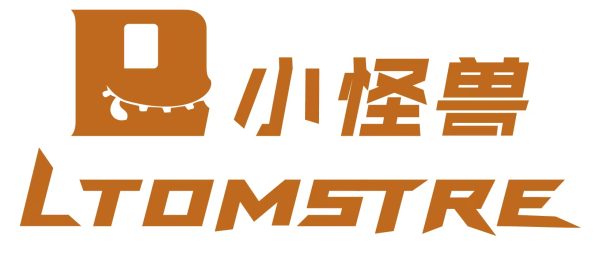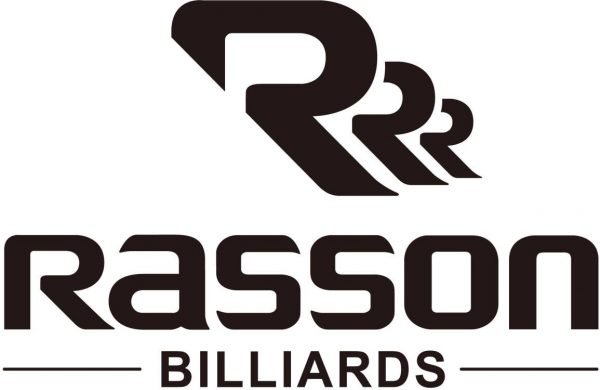Rule Clarifications
AMENDMENTS TO THE RULES OF SNOOKER AND BILLIARDS
TO TAKE EFFECT ON AUGUST 12TH 2014. and NOVEMBER 2014 ALTERATIONS
SNOOKER
Section 2 Rule 6 Stroke. (a) The addition of “except whilst addressing the cue-ball (known as feathering)”Section 2 Rule 13 Free Ball
Now to include “other than the ball on” – This is not a rule change, but just a clarification of an existing rule.
Section 2 Rule 14 Forced off the table
The addition of “or intentionally moved by hand”
Section 3 Rule10 Penalties
The position of the push shot penalty has changed it’s position, from (b)(v) to (a)(x)
In November 2014 replaced to (b) (v)
Section 3 Rule 10 Penalties
(d)(iii) Now reads “touches any ball during consultation”. – This is now a seven point penalty.
Section 3 Rule 12Snookered after a Foul
As above under Section 2 Rule 13 Free Ball
Section 3 Rule 14 Foul and a Miss.
The Foul and a Miss Rule has been re-written for ease of clarity, but in essence remains the same, however many of the cross references have changed positions.
Section 3 Rule 15 Ball Moved by Other than Striker
(a) Remove the words “other than the strikers partner”
BILLIARDS
Section 1 Rule 2 Balls
(a) With the introduction of the spotted Pro-Cup balls, the words “which may have spots” has been added.
SRA EXPLANATORY NOTES
2.1 – This raises the question of whether a frame is considered to have started if the balls are NOT set as in 3.2 If, within the duration of the opening shot, a table setting mistake is discovered, a re-start is in order but, thereafter, it is condoned.
2.1.a – By stipulating that a player may only concede when he is the Striker, it becomes impossible for the Non-Striker to deprive the Striker of a potential ‘highest break’ etc. (See also 4.5. on page 29)
2.2 –‘GAME’ only comes into the reckoning in team events. For all others it should be disregarded and ‘MATCH’ assumes the same definition as ‘GAME’. It is virtually unheard of to hear a Referee call “Frame and Game”?
2.5 – This wording is new from 2011, enlarging on what was there before, but fails to stipulate what should happen regarding any points scored by a non-striker while playing out of turn. This will only happen in four handed games. Until clarification is published, the only guidance must come from the ‘when discovered’ principle (Exp. Note 3.7). Any such points scored prior to the final stroke would be condoned. The final stroke would be deemed a foul and penalty points awarded as per Rule 3.10.a.iv.’
Question and Answer as agreed at a WPBSA Rules Meeting held on 27th June 2013.
Q. Player comes to the table after his opponents turn and taps his cue on the table in appreciation of his opponents’ last stroke, but inadvertently touches the cue-ball which was still in motion from his opponents shot.
A. A foul has been committed, therefore the opponent is awarded either 4 points or the value of the ball ‘on’.
11A
10. Ball in play
- The cue-ball is in play when it is not in-hand.
- Object balls are in play from the start of the frame until pocketed or forced off the table.
- Colours become in play again when re-spotted.
11. Ball On
Any ball, which may be lawfully struck by the first impact of the cue-ball, or any ball which may not be so struck but which may be potted, is said to be on.
12. Nominated Ball
- A nominated ball is the object ball which the striker declares, or indicates to the satisfaction of the referee, he undertakes to hit with the first impact of the cue-ball.
- If requested by the referee, the striker must declare which ball he ison.
13. Free Ball
A free ball is a ball which the striker nominates as the ball on when snookered after a foul (see Section 3 Rule 12).
14. Forced Off the Table
A ball is forced off the table if it comes to rest other than on the bed of the table or in a pocket, or if it is picked up by the striker, or intentionally moved by hand whilst it is in play except as provided for in Section 3 Rule 14(h). ‘ words underlined above are effective from 5th August 2013’
15. Penalty Points
Penalty pointsare awarded to an opponent after any foul.
16. Foul
A foul is any infringement of these Rules.
2.11– This wording covers situations like the ‘free ball’ situation where the ‘ball on’ may NOT be struck by the first impact of the cue ball but may still be ‘potted’ – i.e. by secondary contact. In an obscure sense, it also covers the three reds in the centre of an undisturbed pack which may not be struck – because that would constitute a ‘jump shot’ but may nevertheless still be ‘potted’
2.12– ‘Indicates to the satisfaction of the Referee’ is particularly important when awarding penalty points etc. An obvious example is when a player is clearly aiming at the Blue, but hasn’t said so, and fouls the Yellow. The penalty is five points, not seven.The inclusion of ‘when snookered’ in 3.10.d.v. should not affect 2.12.a. Although technically ‘snookered’ as per 2.17., the striker may be able to see enough of a ball on to pot it quite easily and will therefore ‘indicate to the satisfaction of the Referee’ as normal. The requirement to declare one’s selected ball on only applies after the striker has potted a Red or free ball nominated as a Red and all colours are totally obstructed by balls not on, i.e. other Reds.’
EXAMINERS PREFER YOU TO USE THE WORD ‘DECLARE’, NOT ‘NOMINATE’
2.14 – Whenever the Striker picks the Cue Ball up, it is considered ‘Forced off the Table’ even if he puts it back down after realising his mistake.
Question and Answer as agreed at a WPBSA Rules Meeting held on 27th June 2013.
Q.Player breaks off but for one reason or another, hits the pink hence a Foul and a “Miss” call by the Referee. The non striker requests the balls to be replaced, which includes the cue-ball to the break off position.
A. Scenario (a) Player moves the white by sliding it along within baulk and it didn’t leave the bed of the table. Referee calls a foul but is the ball now in hand for the incomingplayer. No, the ball is not in hand, play on from where it is. OR
A. Scenario (b) Player picks the white up and places it in the exact same position. Is this in hand? Yes.
It was agreed to make an amendment to the rulebook:Section 2. Rule 14 Forced off the table. Page 13 By adding the words “or intentionally moved by hand”: The new wording will now read as follows:-
A ball is forced off the table if it comes to rest other than on the bed of the table or in a pocket, or if it is picked up by the striker, or intentionally moved by hand whilst it is in play except as provided for in Section 3 Rule 14(h). This now means that however the ball is moved it will be IN HAND.
This is effective from 5th August 2013,and the rulebook to be changed at the next print.
2.15 – Unfortunately this new Rule fails to mention the various examples, e.g. 3.14.h., where penalty points are awarded but, in the absence of a foul being called, the non-offender may not, for example, claim a free ball.’
Page upgraded Aug 2013
13A
3.8.a –If a ‘touching ball’ situation is found to exist after a Red has been potted, all six colours, including any that are touching the Cue Ball, are potential ‘balls on’. By declaring and then playing away from a touching ball, one is considered to have hit it but, equally, another colour can be nominated and, as long as one plays away from the touching ball, it is deemed NOT to have been hit. With this new wording it will probably be a wise precaution to automatically add “Please declare” to the obligatory call of “Touching ball”.
The Rules require the Referee to ‘indicate’ which ‘balls on’ are touching. This is normally done by pointing to the relevant ball(s) but, where the Cue Ball and touching ‘ball(s) on’ are clearly separate from all other balls, a verbal “Touching (both) ball(s)” would be equally acceptable.
3.8. b Question and Answer as agreed at a WPBSA Rules Meeting held on 27th June 2013.
Q.The referee declares “Touching Ball”. The player comes to the table and says the balls are not touching. After many attempts, the referee is not able to get the balls touching, as he had previously declared. What to do next?
- If the referee declares “Touching Ball”, the player must play away from this, as if it was a touching ball.
3.8.f –The most common example is when a spot, through wear, has become a dent in the baize and the two touching balls are each stopping the other from rolling into it. However the Cue Ball is played, the other ball will inevitably settle into the dent and it would obviously be unfair to Foul the Striker for it.
3.8.g – The second sentence is new and can help to cover all eventualities.’
Page upgraded Aug 2013
20A
3.9 –For many people in snooker, this is known as the ‘Vibration Rule’ insofar as vibration’ of some sort is virtually the only action, other than physical contact, that can make a stationary ball move. The proximity of a venue to a railway line, trunk road or airport can often have a bearing.
Most people take an interest in snooker because of its foundation on total integrity and the Rules seek, where possible, to preserve this spirit. Whilst no compensatory measure could be devised to overcome ‘fluke’ pots and poor contact (kicks), it IS possible to counter vibration by, effectively, voiding the shot and starting again as detailed in this section.
The only concession is when a Foul forms part of the shot – see 3.9.b. ii. – and, because of their similarity, this section and 3.15 could well be merged into one.
3.9. Question and Answer as agreed at a WPBSA Rules Meeting held on 27th June 2013.
Q. Player pots a red but fouls the green with his cuff. The cue ball is travelling on towards another red that is hanging over a pocket. Before the cue-ball arrives, the red falls into the pocket. What is the decision? A foul of 4 points and all balls to be replaced as before the shot was played.
3.10.a. v – There are some ‘funnies’ that can happen, both at the start of a frame and when ‘in hand’ at other times. ‘Definitions’ in Section 2 become important. A frame commences with ‘the first stroke’ (Rule 2.1.) and a ‘stroke’ is made when the Cue Ball is struck ‘with the tip of the cue’ (Rule 2.6). Therefore, until that first contact of cue tip and Cue Ball, the table is effectively dead and a Foul cannot take place. The Striker can thus knock the Yellow off its spot as he positions the Cue Ball in the ‘D’ and it would be merely replaced. He could drop the Cue Ball, make a grab for it and send it flying up the table to smash the pack – without penalty, and, even if he were to nudge one of the Baulk colours while rolling the Cue Ball round the ‘D’ with his cue, he would still suffer no penalty.
However, playing from a mid-frame ‘in hand’ situation, the table is very much ‘live’ and all these occurrences would now definitely become Fouls but the Referee, having made that judgement and called it, then needs to know what happens to the Cue Ball.
It has been suggested that, if the Cue Ball is OFF the bed of the table when the Foul occurs, it is still ‘in hand’ but, if it is on the baize, it should be considered ‘in play’ and left where it is. After further consideration, however, this may not be the complete answer. One player will place the Cue Ball straight on the table exactly where he wants it, whereas another will put it on the baize and slide it forward, sometimes as much as a foot, to the required position but, in BOTH cases, the Cue Ball is definitely BEING HELD by the player and this is probably a better deciding factor. Until it is clearly released from the player’s grasp, it is prone to some degree of further movement, if only as he takes his hand away, and should be regarded as still ‘in hand’. So :-
Example 1 –Player slides the Cue Ball towards the front of the ‘D’ and, in so doing, his hand, still holding the White, knocks the Yellow off its spot. Decision – Foul, and the next player is ‘in hand’.
Example 2 –Player positions the Cue Ball to his satisfaction and releases it but brushes the Yellow as he takes his hand away. Decision – Foul, and next player plays from where the balls are.
21A
Questions and Answers as agreed at a WPBSA Rules Meeting held on 27th June 2013.
Q.If the non-striker unscrews his cue or removes his tie or starts clearing personal items from the table during the closing stages of a match, is it to be concluded that he is conceding? Yes – dependant on the circumstances, the referee’s decision is final.
Q.Another query is in the docking of a frame where a player is warned for a second time for an act of ungentlemanly conduct. The player committing the act requires a large amount of snookers in that particular frame, effectively having lost the frame anyway (barring penalty points). Should he be docked the frame he has more-or-less lost anyway (and which is still live and he is playing on) or should he be docked the next frame ensuring he is effectively punished?
1. The referee may only dock the live frame. The rules state that after one warning, then the frame can be awarded to the opponent.
28A
4.3 – This slightly expanded wording covers such things as rustling sweet or crisp wrappers etc.
4.4 –The deputy ONLY has the right to claim a foul, (i.e. not detected by the referee) to prevent the striker from continuing unchecked. Having done so, all subsequent decisions await the return of the absent player.
- Q. In the deciding frame of a match, player A pots the final red which puts him 29 ahead with only 27 on the table. Player B offers his hand as a concession, which is accepted. However, the cue-ball is still moving and enters a pocket. What is the decision? The game has already been conceded so the concession would stand.
4.5.a-The main reason for this is to protect the Striker’s right to continue a break well beyond ‘Frame Ball’ if he (a) feels he needs the practice or (b) stands to win a ‘Highest Break’ prize. Similarly, if the opponent chooses to pot the last few balls to exercise his cue arm in readiness for the next frame, he is perfectly entitled to do so.
4.5.c –Now stipulates that a player may not concede a frame if there are sufficient points on the table for him to win. If a player does concede in this manner, rule 4.1.a.iv/v. applies and the player must be warned that a second offence will result in the loss of a frame.
‘Snookers’ should almost certainly be ‘penalty points’ but, having set something of a precedent in 3.14.b.i and ii., it is a little surprising that the opportunity hasn’t been taken to be more exact. Having said that, this sort of concession happens very rarely.
29A
5.1 – Specialist pages at the back of this book contain in depth advice on various aspects of refereeing as developed over the years. The information they contain is purely advisory and attempts to lay down a blueprint for ‘Good Refereeing Practice’
Q. A player is in a sequence of potting red, black, red, black etc. When the referee spotted the black next time, the player checks and now sees that the black will not pass a red. When the referee removes his finger, the ball just slightly rolls off the spot, so as not to be able to be potted. Now, regardless of the fact that the referee probably incorrectly spotted the black in the previous occasions, what should happen next?
1. The referee’s decision is final, and therefore play should continue as long as the referee is satisfied that the ball is on the spot.
(a) The referee shall; (ii) be free to make a decision in the interests of fair play for any situation not covered adequately by these Rules.
Q. With just one red left on the table and the difference in the scores being 33 points in favour of player A who believed that he could strike the final red by playing between the yellow and blue, but struck the yellow on the way through. The referee immediately called “foul and a miss” but the cue ball goes on and collided with the red which entered the pocket. Now player A is 29 up with 27 on the table. His opponent asks for the balls to be replaced which the referee duly does and brings the red back to the table. Was this the correct decision? There were two possible answers which were:
- No Foul and a Miss should have been called because of the difference in scores.
- Yes, it should be a Foul and a Miss because under these circumstances, player B is now at a distinct disadvantage by now requiring penalty points by an unfair (though not unlawful) manner.
- The committee feel the referee acted appropriately in this instance. The decision by the committee is that a referee should refer to the Rules Section 5:1 (i) and (ii), Page 30.
5.1.c. -Is amended to allow the use of camera or video recordings to assist the referee. This will be seen mainly in matches which are being televised and balls are being replaced following a call of ‘Foul and a miss’ by the referee.
5.3.– Recording has its own separate sheets at the back of this book together with a sample recording sheet.
5.4.a –Listed in greater detail under 3.19.b. including advice to colour-blind players.
The inclusion of the following paragraphs may prevent misunderstanding. If someone were to consult the table of contents at the front of the Rule Book and find a section entitled ‘Assistance by Officials’, they should rightly expect that ALL instances of such assistance would be listed. They should not have to go off hunting through the rest of the book for others.
A player may be told, when ‘in hand’, whether or not the Cue Ball is ‘properly placed’. See 3.5.a
Referees may advise players whether or not ‘balls not on’ are touching although it has little bearing on the game. See 3.8.d.
A player may ask what balls the Referee intends to replace, if asked, following a call of “Foul and a Miss”. See 3.14.i.
‘Note – There are two good reasons why, particularly in public, the word ‘disabled’ should be used in preference to ‘handicapped’. There are, of course, open competitions where players are ‘handicapped’ according to their known performance and given ‘x’ points start over their more able opponents. These have nothing to do with physical disability but the second reason for using ‘disabled’ relates to the origins of the word ‘handicapped’ where those who were prevented from earning a living because of their disabilities were obliged to beg on the streets. This invariably involved them holding their ‘caps’ out in their ‘hands’ and the association can prove offensive to a more sensitive disabled person.







